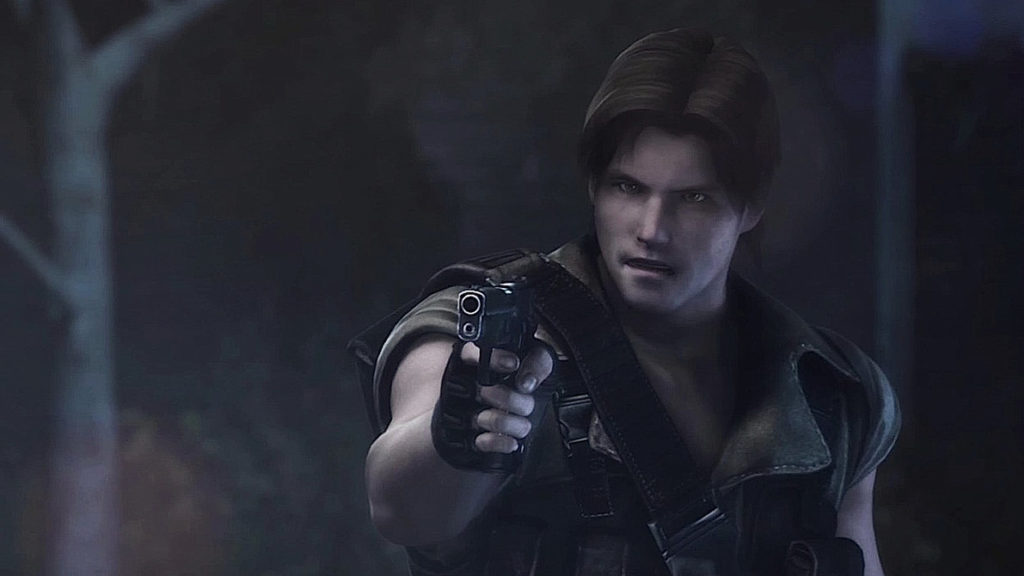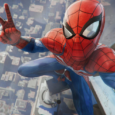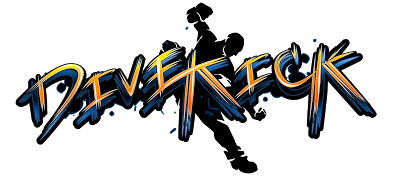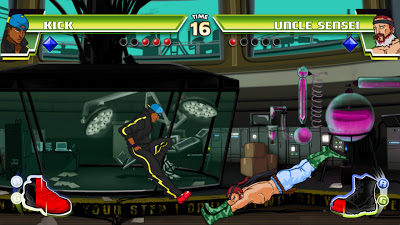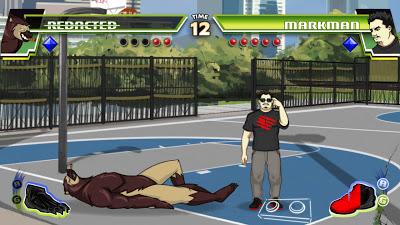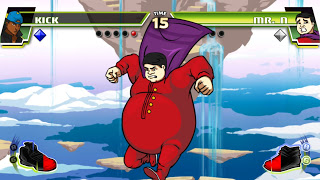I started this article during our September gaming month here at Sub Cultured. Since Hispanic Heritage Month also ran until mid-October, I had originally decided to compile a list of characters to showcase Hispanic representation in video games. I identify as Hispanic, having a mix of Spanish and Mexican blood in my genetic makeup (among others) and while my ties to my cultures aren’t very strong, I enjoyed the few times I’ve gotten to play as a Hispanic character. Upon writing this, I realized just how little I’d had the opportunity.
“From the press to the games they cover, the absence of black or Hispanic characters is limiting its fan base, its narrative potential, and its creative ideas.”
Where Are We?
For a lot of us, discovering Hispanic characters in our gaming choices means seeing ourselves on the screen and allowing us a place in the stories we played. Unfortunately, characters with darker skin tend to be strictly reserved for tertiary roles or worse, cameo appearances which end in death before we get a chance to experience any sort of character development. Honestly, I had trouble thinking of others aside from Street Fighter’s Vega and Resident Evil’s Carlos Oliveira. Vega is a gorgeous Spanish assassin whose modus operandi is killing women he deems ugly and is one of many choices on Street Fighter’s roster. Carlos is a South American ex-militia sort of guy with a good heart, and he even gets to save the day in Resident Evil 3. In addition to them, there are other, smaller roles prevalent in games, like the cholos in Grand Theft Auto installments, Bane in Injustice: Gods Among us, and while we are sprinkled throughout independent titles like Guacamelee, but where are the protagonists?
When I worked through the vast catalogue of video games I’ve ever played in my life, I found a solid argument could be made for Dead Rising’s siblings Carlito and Isabela Keyes as both were playable, fully fleshed out 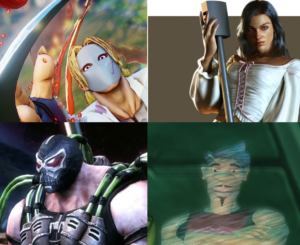 characters. However, it was disheartening to realize I’d come up with just two out of scores of main characters spanning dozens and dozens of popular franchises. We exist as NPC’s like Final Fantasy XII’s Al Cid Margrace and the A.I. Secundo from Beyond Good and Evil, but no matter where I looked, Hispanic and Latino main characters statistically don’t exist.
characters. However, it was disheartening to realize I’d come up with just two out of scores of main characters spanning dozens and dozens of popular franchises. We exist as NPC’s like Final Fantasy XII’s Al Cid Margrace and the A.I. Secundo from Beyond Good and Evil, but no matter where I looked, Hispanic and Latino main characters statistically don’t exist.
As I researched more characters, like Steve Cortez from Mass Effect or the handful of luchador based exaggerations, I noticed a trend. Mostcharacters consisted of stereotypes with similar accents no matter their ethnicity and language, or served a purpose little beyond forwarding the white male hero’s journey. Is this really how we’re seen? Settling for the bare minimum of representation is not what we deserve, and it’s something we should strive to change. Surprisingly, the fighting genre did far and above have the most inclusive characters, counting LGBTQIA individuals among their ranks like Guilty Gear’s Bridget and Kung Jin of Mortal Kombat, even though the genre is inherently catered to the male gaze.
It’s been some years since we have seen a “main character” introduced with a Hispanic background. What more do we have to do to get a game centered around us? Take a look around the next time you’re buying a video game. We ARE purchasing games, we ARE playing the shit out them, and we ARE an audience developers are not considering according to the most recent study. With the passing of one of the more influential Latino bloggers, Juan Carlos Alanis, in the past couple of years, no one has really stepped up and filled his place in the gaming community. There aren’t resources for us, so we are left to join the forums of places like the profit run IGN, or social media groups.
What Can We Do?
Can we make the gaming world aware of our existence?
Hell yes, we can.
Together we can be loud, and utilize the spaces and movements given to us. Brandish that #HeritageMonth hashtag between September 15th through October 15th. Reintroduce the gaming community to GameDev Latinos, a site highlighting developers from all over and where to buy their games. Create your own hashtags when you get to pick a Hispanic character. Overwatch, Blizzard’s immensely popular FPS, JUST added Sombra, the Mexican hacker. Use her, talk about her, and let’s raise awareness about how special she is to us.
We can create our own stories, and create our own games based on our rich backgrounds. Those of us with game development dreams, go for them! Let’s discuss how different a game’s story would play out because the main character is Brazilian, Dominican, Mexican ,etc (Spoilers: it wouldn’t be different). We don’t have to wait for a story starring us; we can create that story! CollegeScholarships.org has a decent list of resources to continue your education in those fields, both academic programs and scholarships, so take advantage of them! Indie blog Remezcla even recently highlighted up and coming developers after Kingdom Rush was created by Uruguay-based Ironhide Game Studios and grabbed the attention of the gaming industry a few years back.There are people making games actively right this second for you to work with.
Are you a convention goer? Request panels from Hispanic and Latino developers, or submit your own and start the conversation. I promise that if there’s one thing I’ve learned from talking too much about everything, it’s that you’re not alone in how you’re feeling. Sub Cultured will be attending PaxSouth in January, held in beautiful San Antonio, and my focus will be on seeking out games that represent us.
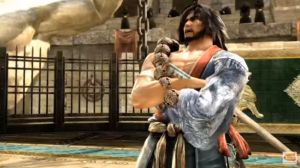 You can count on my having been an all purpose nerd for pretty much my entire life – to the tune of getting the call at age 10 to hook up my friends’ new SNES. And after I made the recommendation of A/V cables over the RF switch to connect it, he pulls out a shiny fresh Street Fighter II cartridge to bless the console with. Thus started the age of fighting games, round robin style – friends in a room where the winner victoriously clenches a controller, while his/her defeated adversary reluctantly passes theirs on. Now, take into account that this was 1991. I didn’t have a fast internet connection let alone a computer. So this was social gaming for us – no XBOX Live Lobby or PSN connections. Trash talk was live, and we were absolutely hype out of our minds.
You can count on my having been an all purpose nerd for pretty much my entire life – to the tune of getting the call at age 10 to hook up my friends’ new SNES. And after I made the recommendation of A/V cables over the RF switch to connect it, he pulls out a shiny fresh Street Fighter II cartridge to bless the console with. Thus started the age of fighting games, round robin style – friends in a room where the winner victoriously clenches a controller, while his/her defeated adversary reluctantly passes theirs on. Now, take into account that this was 1991. I didn’t have a fast internet connection let alone a computer. So this was social gaming for us – no XBOX Live Lobby or PSN connections. Trash talk was live, and we were absolutely hype out of our minds.
This continued through college (fast forward 10 years to 2001) where Soul Calibur became my new jam. My next door neighbor and I both became so good at it that we used to play in versus mode using Edge Master vs. Edge Master for added challenge to see who could hit 99 wins first. The only time we ever made it that far we were tied at 98-98, and when tension was at maximum on round 197, we double KO’d each other. We shook hands and decided never to do that again.
Sodas and chips turned to beer and pizza as we got older, but trash talk and admonishing each other for cheap ring-out victories stayed the same. But of course there were times when ridiculous things like classes and homework and labs got in the way. During those times, if you couldn’t get a quorum together, then you played alone. And that was OK! Most of the fighters I played had a built-in arcade or story mode, where you could follow a selected character’s storyline through after beating a final boss and seeing an ending. Characters were actually, well, characters. And you had a favorite, not necessarily because you “owned” with them, but just because you liked them.
And up to a point, if the arcade mode wasn’t enough for you, the Soul series went a step further in SC2 and SC3, by giving you a full scale additional single player campaign, allowing the player to create a character for a full scale RTS-type experience. And it was excellent. I could sit alone when the weather outside was frightful and go knuckles deep into a solo mission.
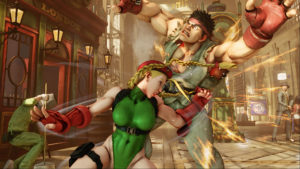 But then the decay started. Soul Calibur 4 replaced their secondary single player mode with some strange tower game. Then Namco robbed me of my money that I spent on the Soul Calibur 5 Collector’s Edition for what started off as a story mode but fooled me good. There was no story. Characters just came from some sort of abyss with no explanation and no backstory. I dubbed the game “incomplete,” but became clear to me later that this was intentional, and was tuned for online play in PvP.
But then the decay started. Soul Calibur 4 replaced their secondary single player mode with some strange tower game. Then Namco robbed me of my money that I spent on the Soul Calibur 5 Collector’s Edition for what started off as a story mode but fooled me good. There was no story. Characters just came from some sort of abyss with no explanation and no backstory. I dubbed the game “incomplete,” but became clear to me later that this was intentional, and was tuned for online play in PvP.
Street Fighter V did the same thing, by entrancing me with FMV video in their commercials leaving me to guess all the character relationships and who was fighting who else for what purpose. It pointed to some sort of story mode in the game, but as we all saw earlier this year, Capcom opted to not include single player arcade content. This was again, clearly intentionally incomplete. The quicker a PvP version of the game came out the quicker it could be played in video game tournaments. Problem is, that leaves out the con-competitive player in a series of games that traditionally had something for us – especially on CONSOLES, I mean come on. And if they’d advertised as such, I’d be ok with it. But that’s where it seems like it’s going with 2 of the major fighter franchises purposefully omitting single player options when they used to be (at least in the Soul series) extremely rich and deep.
I’m a cranky old man now, and I’ve always enjoyed fighters to play with my friends – or even moreso – play alone. I don’t want to pull a pro-level gamer who does this 10 hours a day to trounce the hell out of me to “lol”s. Screw that. I have a job and other things to do, and it may be old fashioned to say so but I’m only willing to buy a game if I’ll get an hour enjoyment out of each dollar I spend. I’m set in my ways, and when I can’t play a fighting game on a console with people I know then I’d like to have a option to satisfactorily play alone. And that’s what the story/arcade modes have always been. I want my gaming downtime to be enjoyable, not frustrating on the so called Capcom Pro Tour. So if this is the way fighting games are going, well then I may be done with them.
Yoshinori Ono, Street Fighter Producer, did however say earlier this month that he underestimated the popularity of single player features.” Now if something comes from that, I’ll consider strapping on the gi and red headband once more, Ono San.
If all of the waxing poetic about the game wasn’t an indicator, I like it. Superficially, Divekick is a joke. Obviously. One of the characters is a doctor named Dr. Shoals who has rocket boots and its looking for a cure for a foot disease called Foot Dive. Of course it’s a joke.
As Divekick matured, its roster grew, and with more characters, things to distinguish between characters needed to be added. As a result the roster is significantly expanded, allowing players to choose a character to fit their playstyle. With that comes a certain degree of having to learn a character and I was initially scared that this would mean the end of what I enjoy most about Divekick—its transparency. But as I played, I found that these fears were unfounded as it’s as complex as it is understandable. The metagame of Divekick—trying to figure out when your opponent will attack, how high they’ll jump, etc…—is incredibly complex, but the controls and movesets are so limited, you’re always in control and your opponent’s moves are never an unknown.
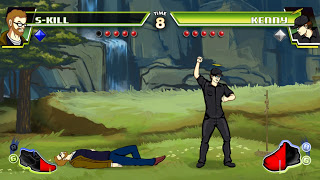 Put simply, that’s why Divekick is currently my favorite fighting game. There’s nothing mystifying about it. If you lose, it’s because the other person is either faster with their fingers than you, able to outsmart your moves, or lucky enough to land the first hit. And when you are defeated, you see exactly what happened and you can learn from it. Divekick is the first fighting game I’ve ever played in which I didn’t feel alienated when playing friends proficient in fighting games, and that’s intensely satisfying. Even playing pros online, I could win a few matches because I happened to position myself in such a way that they were caught off guard.
Put simply, that’s why Divekick is currently my favorite fighting game. There’s nothing mystifying about it. If you lose, it’s because the other person is either faster with their fingers than you, able to outsmart your moves, or lucky enough to land the first hit. And when you are defeated, you see exactly what happened and you can learn from it. Divekick is the first fighting game I’ve ever played in which I didn’t feel alienated when playing friends proficient in fighting games, and that’s intensely satisfying. Even playing pros online, I could win a few matches because I happened to position myself in such a way that they were caught off guard.The game features single player mode, which has exactly as much story as you’d expect—somewhere between five and six panels of moving comics plus three dialogue banter sessions. Of course there’s a local versus mode, even on the Vita, but there’s also an online portion which boasts the best netcode of any fighter out there. To be fair though, I’ve had more than one match with a little lag, and one in which the loading screen came up for a few seconds before the battle resumed.
The art style is hand drawn and can be a little amateurish at times, but it all fits with the themes of the game. The music is unobtrusive and the backgrounds aren’t distracting, lending to the idea that in Divekick, combat is king. Just like in most fighters, you can complete story mode in about half an hour per character if you’re bad. Matches are completed in anywhere between 15 seconds and the absolute maximum of 3 minutes, meaning it’s as quick as it is intense.
Verdict: Come on, have I not gushed enough? Divekick is hands down the most simple, elegant, fair, and accessible fighter I’ve ever played. To fighting game terri-bads like myself, it’s perfect since the investment to get proficient is so low. And to fighter pros, it’s also perfect since the movesets are so simple, you’re forced to be creative and quick thinking to pull off a victory against a seasoned pro. Or lucky. That’ll work too.
Just go buy it, come on man.
As a side note, Iron Galaxy was kind enough to give me a review code for the game the day before its release on a far too late request from me. Even though he wasn’t in the office, the CEO himself handled my request quickly and got me the code very quickly, so thanks so much to Dave Lang. Also for the record, I bought the game on Steam just so I could support them with my dollars. You should too!


